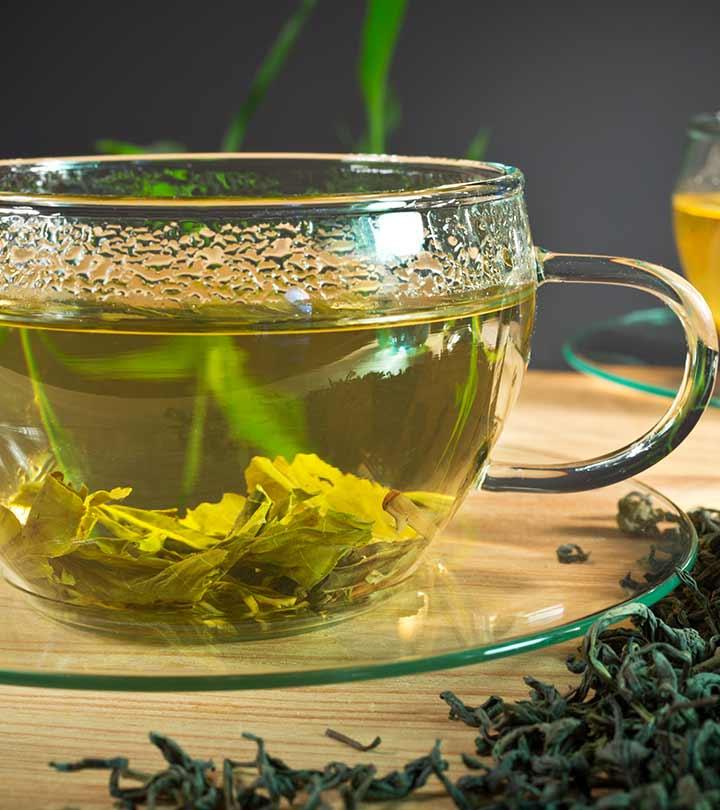
But you can also eat the tea leaves after they have been brewed for tea. Instead of brewing the green tea leaves they are ground into a fine powder that can be added to liquid or foods.

If you want to eat tea leaves its best to eat them after steeping.
Can you eat green tea leaves after brewing. Eating green tea leaves has the same benefits as drinking green tea but in a more concentrated way. When you eat green tea leaves you get all of the powerful antioxidants without leaving any behind. Eating green tea leaves is also more convenient than brewing tea making them easier to incorporate this super food into your diet.
The idea was to avoid waste by finding another use for your spent tea leaves. This time lets see how we can eat the brewed green tea leaves. Once you finished re-steeping your tea the tea leaves still have a lot of nutrients in them.
Matcha is simply powdered green tea. Instead of brewing the green tea leaves they are ground into a fine powder that can be added to liquid or foods. This means youre not just sipping on water that has been infused.
Youre getting all the good things green tea has to offer. Since only a small proportion of tea leaves ever dissolve in water the best way to ingest green tea is either to eat it or to take matcha powder. This argument is faulty for the following reasons.
- The most important nutritional components in tea leaves are catechins caffeine and theanine. Usually these scraps are thrown away. But you can also eat the tea leaves after they have been brewed for tea.
You put them on a small plate or bowl and put dry tuna flakes as topping. You can eat them with soy-based sauce. Yes you can eat tea leaves.
They are edible both raw and steeped. They are currently not banned from eating and are not a health hazard. If you want to eat tea leaves its best to eat them after steeping.
You can eat tea leaves some teas like Matcha are consumed and tea is often used in culinary pursuits. In most circumstances its fine to eat tea leaves to a reasonable level. You will likely not gain greater benefits than drinking the tea and you should not consume large amounts.
Also what do you. They all agree a perfect cup is more than just pouring boiling water over tea leaves. For example first harvest green tea will have 610 more catechins than green tea from later harvests.
Catechins give a bitter taste and a cup of first harvest green tea made with boiling water might turn you off drinking green tea for life. This means that once your wet tea leaves have been exposed to water you have a maximum of 3 hours to use those tea leaves before you throw them away. The combinations of water with the hot tea leaves can cause bacteria to grow that can make you feel pretty terrible.
What I Personally Do. You can eat green tea leaves like gyokuro and Japanese sencha in salads or mixed with rice. Use the leaves within a couple of hours after brewing when they are still fresh.
You can use both dry and wet tea leaves but make sure they are always fresh and stored properly. Its best to avoid eating tea leaves due to the content of heavy metal contaminants. Instead drink brewed tea.
To brew loose leaf tea start by measuring out 1 teaspoon of loose tea leaves per cup of tea youre making. Then put the leaves into the cups youre going to be drinking out of. Next bring a pot of water to a boil and then pour the boiling water over the tea leaves in the cups.
Let the tea steep for 3-5 minutes remove the tea leaves and enjoy. However on a gram-for-gram basis if you are consuming the tea leaves from 2-3 bags of green tea per day you are consuming approximately 4-6 grams of leaves and a gram equivalent of 16-24 capsules of green tea powder. Whether this practice is appropriate in your circumstances is a question that your healthcare provider will need to address.
You can place the tea leaves directly into the water then remove them with a strainer or use a tea infuser tea stick or similar device to dangle into the water. After a period of a few minutes the tea should be sufficiently steeped and ready for consumption. The heat can make those delicate tea leaves taste bitter and less sweet.
Studies show that hot water can also destroy delicate health-promoting compounds like catechins. For the perfect cup of tea you want your water to be just under a rolling boil you can eyeball to be around when small bubbles start to form alongside the kettle. Cold-brewed green tea is one of lifes delightfully simple pleasures.
Cold-brewing is easy to do and it produces tea with a mellower taste and clearer appearance compared to hot-brewed tea. And if you are concerned about caffeine intake brewing with cold water releases less. When brewing a variety of different teas in the same vessel we always like to invest in a flavor-neutral material like heat-resistant glass that wont spoil a delicate green tea after holding a strong tea like spiced Chai.
For quick brewing with Japanese green teas you only need to wait around 15 minutes before serving matcha cold brews are ready instantly. When your tea is ready turn the bottle upside down a couple of times before serving to get the full flavor. You can also leave your tea in.